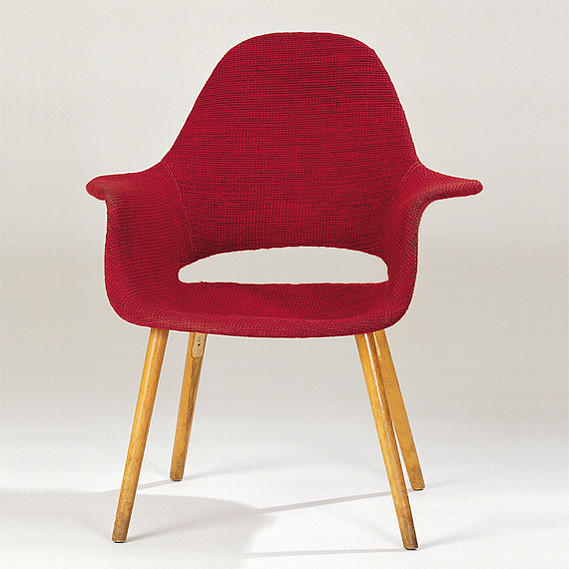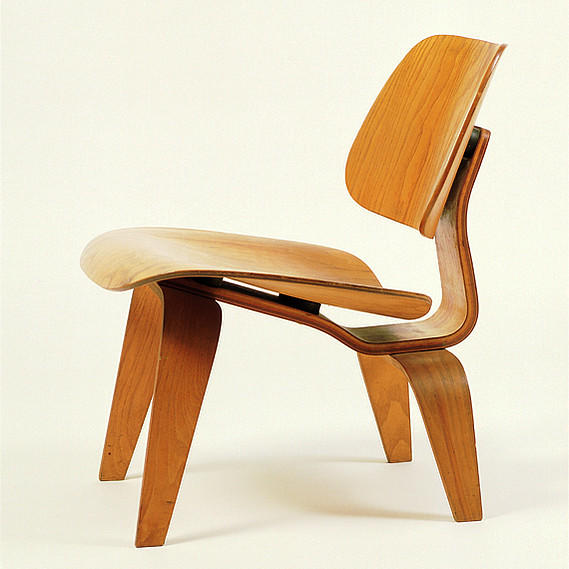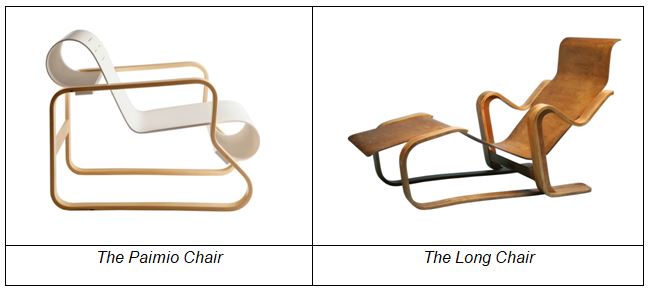One of the primary reasons why the twentieth century became significant was an active use of molding plywood in the furniture industry. When the advantages of this material were discovered, designers began to compete in the divergences of forms and shapes. However, the best piece of furniture looked simple enough at the first blush and still broke all records.
An Object Description
Eames Lounge Chair Wood, or the Low Chair Wood (LCW) as it is also widely known, is a famous piece of furniture designed by a married couple, Charles and Ray Eames. The chair was made of molding plywood, the material, which gained an enviable popularity during the twentieth century.
Firstly, there was a nationwide design competition called Organic Design in Home Furnishings, which was held in 1940 (“Organic Armchair” par. 1). The term “organic” in that context has been defined as the design where “within the object as a whole, there is a harmonious relationship between the individual elements as regards structure, material, and purpose” (“Organic Armchair” par. 1).
Charles Eames and Eero Saarinen, who introduced the results of their attempts to realize “the threedimensional molding of plywood”, won the competition (“Organic Armchair” par. 1). The seat of the chair they presented and its backrest were performed as one piece of plywood curved into various planes and directions.
Although the armchair indeed looked good and was comfortable since followed the contours of the human body, it still had several drawbacks. The most significant one was that plywood if sharply curved usually cracked and partly lost its attractiveness. That is why designers had to cover the armchair with upholstery in order to hide the imperfections. In the photo below, you can see the Organic Armchair.

Despite the fact that Eames and Saarinen won the competition, Eames wanted to achieve the perfectiveness, which is why he started working on a new model, engaging his wife to the case. By trial and error, they finally came up with a new solution.
The Eameses decided to make a seat and a backrest as two separate pieces and then put them together with the help of a spine, supported by four legs (“Lounge Chair Wood” par. 1). All of those elements were made of plywood and connected with rubber washers. Plywood was still curved into different planes and directions but not so sharply as before. That is how Charles and Ray Eames avoided the need to cover the chair with upholstery, and all materials remained visible.
Such kind of design became very famous and loved by the public due to its simplicity, naturalness, sleekness, and convenience. The armchair followed the contours of the human body no worse than the previous model. Besides, it did not contain any expensive materials and was affordable, which was a priceless advantage at those times. In the photo below, the final result can be seen.

At the end of 1945, Molded Plywood Division produced “a number of chairs and armchairs from a wide variety of woods, with fabric, imitation leather, leather, or hide coverings for the seat and backrest” (“Lounge Chair Wood” par. 1). That is when the LCW has gained its unique design, for which that furniture is famous even now.
A Contextualization for the Object
Presently, all of us know what plywood is; however, before the twentieth century, it has never been not so popular. Surely, there were some attempts to bring it into use. Those probably started with Michael Thonet, who used laminated veneers in the furniture production in the 1800s (Banham 978). However, demand for plywood greatly increased only at the beginning of the twentieth century, when the World War I burst out.
Plywood was “lighter and stronger than solid wood”, much more flexible, and, admittedly, less expensive (Wilson and Snodgrass 6). Due to those characteristics, it was used to build lighter and agile aircrafts (Wilson and Snodgrass 6). Even though the furniture manufacturers had nothing to do with the war aircrafts that made them notice the valuable features of plywood, and they began to use it in the furniture production more and more.
The war was over, and demand for this material did not decrease. Just the opposite, people began to use new, improved plywood. The Forest Service’s Forest Products Laboratory developed their technologies, and a great number of improvements followed. In the 1920s, the laboratory began testing plywood sheathing; in 1930, the first size standards appeared; in 1934, water-resistant plywood was introduced, and that allowed the usage of this material for exterior designs (Wilson and Snodgrass 7).
Finally, a number of famous chairs made of plywood appeared. Probably, the first one was the Paimio Chair made of a single sheet of material and designed in 1932 by the Finnish architect, Alvar Aalto (Banham 978). In 1936, Marcel Breuer came up with his Long Chair, which was even more unusual and had the leg forms (Banham 978). Nevertheless, both of them were too complicated and artsy for the ordinary people’s dwellings. In the photos below, you can see both models.

In 1940, Eames and Saarinen introduced their creation, which was simpler in appearance and at the same time more complicated in reality.
The Object’s Role in the Craft History of the Twentieth Century
The Lounge Chair Wood became a real breakthrough in the craft history of the twentieth century. On the face of it, it seems to be simpler than the Paimio Chair or the Long Chair. However, that is a false conclusion. Unlike Alvar Aalto and Marcel Breuer, who managed to curve material only in one plane, the Eameses “succeeded in moulding a single sheet of plywood into different directions, on different planes, at the same time” (Banham 978). The Eameses broke the rules and went beyond the frames.
As Banham stated, they “rejected the rectilinear geometry of contemporary architecture” (979). That is why I believe that this craft object indeed has a significant value to the field of the twentieth-century craft history. Besides, when the Eameses found out about the cracks that appeared in the material because of the extraordinary curves, they spent years to come up with the idea how to rectify the situation. That is why I consider this craft object as well made.
In addition to new forms and shapes, the LCW was also designed and produced in many different variations of colors. While the works by Aalto and Breuer were made only in basic colors, such as black, white, brown, and several muted shades, the Eameses did not want to limit the range of colors to those primary ones.
As for my own view of the twentieth-century craft, perhaps this object was even too much for that century. The furniture industry welcomed the techniques that the Eameses developed for curving and bonding plywood. In 1999, the Time magazine called Eames Lounge Chair Wood “the best design of the 20th century” (“Chairs of Our Lives” par. 5). Even now, many modern manufacturers use Eameses’ ideas and techniques in their work.
The only difference is that nowadays people tend to forget the main aim of the craft. Using ideas from the previous centuries, we rarely come up with our own. We rely on existing techniques, forgetting that techniques and machines can not be a panacea. We learn from the previous generations and do not realize that “designs cannot be taught” or learned, “only the principles” can be (Adamson 572). I am sure, it would be better if our generations had more Eameses at its disposal.
To conclude, both the Lounge Chair Wood and its predecessor, which took the first place in the Organic Design in Home Furnishings competition, changed the whole craft history of the twentieth century. Charles and Ray Eameses, as well as Eero Saarinen, were not afraid of trying something new or go beyond the frames, and managed to do something that nobody had done before them.
In addition to new forms and shapes, they also significantly simplified a design and added novel colors, which made their furniture more appropriate for the ordinary interiors. Even now, many manufacturers follow their example and use their techniques and ideas. Presently, it is not surprising to enter a modern living room and see a descendant of the Lounge Chair Wood. It seems to be the best proof of the fact the LCW has left a mark on history.
Works Cited
Adamson, Glenn. The Craft Reader, Oxford, United Kingdom: Berg Publishers, 2010. Print.
Banham, Joanna. Encyclopedia of Interior Design. Vol. 1-2. New York, New York: Routledge, 2015. Print.
Chairs of Our Lives. Web.
Lounge Chair Wood: Charles and Ray Eames. Web.
Organic Armchair: Charles Eames and Eero Saarinen. Web.
Wilson, Richa and Kathleen Snodgrass 2007, Early 20th-Century Building Materials: Fiberboard and Plywood. 2015. Web.